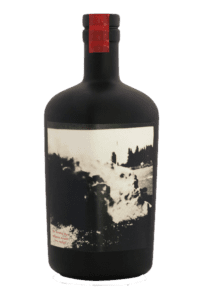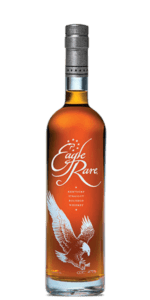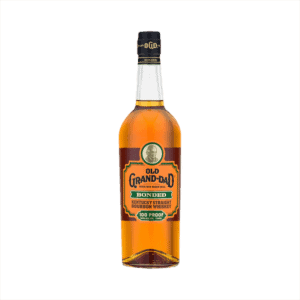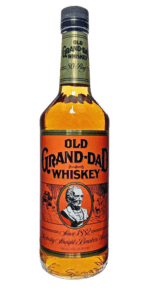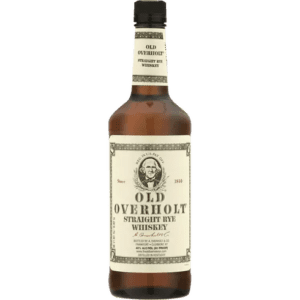Table of Contents
This week
·Editor’s letter – Revel Barker
· Gerard Kemp – Peter Smith goes on the road with a professional
· Bob Warren – Tom Crone is in the office and on the fairway with the old hand from the Screws.
· In a well-travelled career,Peter Laudfound himself in Birmingham, London, Manchester, Perth and Canberra. But as he gets the hay in this week in his eventual home in Tasmania, it’s Deansgate he especially remembers, and that bloke known as KD, who taught him to Walk Tall.
· It went largely unnoticed, even (especially?) in Fleet Street, that Harry Benson was made a CBE in the New Year Honours. That’s a rare accolade for a snapper. David Friendof Vanity Fair explains why he deserved it. And he includes a list of pointers for people who would emulate him.
· Colin Dunne has landed in Fleet Street. But it is Number 85. Where are all the colourful characters he was expecting to find? Inevitably, Mr Dunne stumbles across one. Or even two.
#
Tradecraft
It goes (almost) without saying that when we were children there was no Ranters. There were hardly any books about how the job was done, apart from the yellow and black Teach Yourself Journalism to which a careers master – always assuming that he even took your ambition seriously – could steer you.
Ah, Teach Yourself Journalism! It was written by somebody that nobody I ever met had heard of. Apparently a national newspaperman could bring his annual salary up to close on £1,000 a year if he was prepared to do a Saturday shift for the Sunday papers. I wonder whether it was ever updated.
It was not until the advent of a series of books about spies, Ian Fleming then Len Deighton and finally John Le Carre, that we even had a word for what we did and the way we did it: it turned out that what we were doing was called tradecraft.
In addition to the fact that Fleming and Deighton both worked for newspapers (as, of course, had Kim Philby), there were other similarities between the two murky trades. They both often operated under cover and sometimes on the periphery of the law, they investigated villains, they had expense accounts but no set hours of work, and they traded in secrets.
At the Daily Express they even dressed like James Bond – dark blue suits, blue shirts – except that instead of the black-knitted silk tie they tended to sport a garish blue terylene number with a crusader motif. That neckwear and a badge on the car advertising membership of the office motoring club may have been great for esprit de corps, but (now it can be told) it was a bit of a giveaway on undercover jobs, chaps.
I suspect that, had the opportunity existed in our formative years, we would have pored over almost every word in this week’s edition of Ranters. The tradecraft is here, exposed for any note-taking or picture-taking tyro contemplating a life in the Street of Adventure.
From the dress code and the demeanour when crunching up the gravel path in a (restricted) housing estate, and establishing your presence after getting through the door, to setting up your cameras and your attitude to secure the best photos… to office customs and even the secrets of making money on the side, it’s all here.
We go on the road with famous names like Gerard Kemp and Harry Benson and mainly stay in the office with Bob Warren, Peter Smith and Colin Dunne.
For most of us, it will bring back memories. Yes: that’s just what it was like. For beginners, it is how the Great Game was played.
Is it still like that?
Somehow, I doubt it.
#
On the road with Gerard Kemp
By Peter Smith
It’s become a regular occurrence these days for news outlets to report yet another armedo hold-up or shooting and for police and commentators to condemn the availability and use of replica guns, indistinguishable from the real thing and easily converted to the genuine article. Yet they’ve known about this long enough. The Daily Mail was the first to point out their dangers in a dramatic half page exposé of ‘the terrifying non-gun’ – and that was in the old, broadsheet-sized Mail. The date: March, 1970. They can’t say they weren’t warned.
There was no by-line on this piece, for it came under the umbrella of the Mail investigation team. But the author was Gerard Kemp who died last week at the age of 79. A true Fleet Street stalwart, with spells on the Daily Herald, the Mail, the Daily and Sunday Telegraph and the Sunday Express, Gerry had been in poor health for some years, thanks in part to the National Health Service. In hospital for a hip operation after a fall he contracted one of these ‘superbugs’ – not MRSA but something like it. Since the infection would not clear up his thigh bone had to be removed and from then on he was confined to a wheelchair.
Yet his quirky sense of humour remained, for though his career was as a hard-nosed reporter he was at heart a theatrical. He’d have loved to have been an actor, or, failing that, a showbiz writer. But instead he went on assignments such as the Six Day War and other skirmishes in the Middle East, the Angolan Mercenary Trial and the IRA troubles. For this he was called to give evidence to the Saville Inquiry into Bloody Sunday which continues to this day, at a cost to the taxpayer of tens of millions. Yet all the time he would have loved to have been on stage, perhaps bellowing out a song in Annie Get Your Gun, his favourite musical, while at the same time avoiding his two pet hates, fresh air and exercise.
I first met Gerry when he was on the Herald and I was on The Star, the London evening that folded in 1960 along with the News Chronicle. I remember the story we were on very well: it was of the last teenager to be conscripted for National Service. He’d gone missing for a while before eventually giving himself up, hoping they’d have forgotten about him. They hadn’t – but they didn’t keep him in long.
(Why he bothered going AWOL is a mystery to me. As National Service drew to a close the army were looking for any excuse to send a conscript home. Michael ‘Inspector’ Watts, an occasional contributor to Ranters, went off to fight for Queen and country one Monday and within days was back in the reporters’ room of the Nottingham Evening News. He’d complained to the M.O. of a few aches and pains and was promptly medically discharged because of ‘rheumatism’).
Later I joined up with Gerry as a member of the Mail ‘Newsight’ investigation team, set up by editor Mike Randall as the Mail (somewhat under funded and unsupported) answer to the renowned Insight Team of The Sunday Times.
Gerry enjoyed his time there, though all the time hankering for show business and taking part in amateur theatre productions. But his stage talent could come in handy…
One joint venture we went on was to investigate in detail the escape from Dartmoor of Frank ‘Mad Axeman’ Mitchell. On our second day there we managed to obtain the name and address of the young warder who’d been in charge when the Mad Axeman made his escape. Ignoring ‘no admittance’ signs, we drove to the estate of prison officers’ houses and knocked on his door.
Here a brief description of Gerry is helpful. He was a big man, over 6ft tall and heavily built, I would guess around 17 – 18 stone. He also favoured a fairly sober mode of dress: a longish, dark-brown tweed overcoat and a trilby. In short, a film director asking Central Casting for a Det Chief Superintendent would have been delighted if Gerry had turned up on the set.
The door was opened by a young woman. I can’t say for sure whether Gerry actually rocked on his heels, but I do remember him raising his trilby and asking politely if the young lady’s husband was in. He played the part to perfection.
Without bothering to ask who we were she invited us into the front room while she went to fetch her husband. Gerry and I immediately opened our brief cases and spread out our notebooks and sundry papers on the table – a ruse favoured by the likes of double glazing salesmen. If you’re told to clear off you can at least delay your exit for a few moments while gathering up your papers.
It wasn’t necessary. Once assured of complete anonymity the young prison officer was friendly. He told us Mitchell had been part of an ‘honour’ party allowed out on the moors to work. (Actually, he’d also become a regular at a fairly remote pub.) It was the prison officer’s job to keep a regular check on him and he then revealed an extraordinary fact: when he discovered that Mitchell was missing, five hours had elapsed since his previous check. The Mad Axeman, one of the most brutal and dangerous thugs in the land, had had up to five hours to make good his escape. We returned to London well pleased with our efforts.
Mitchell’s escape was one of several that had caused public alarm so the government set up a tribunal of inquiry under the chairmanship of Lord Mountbatten. When published a year later I was skimming through its report when I came across an alarming paragraph. It asserted that, when Mitchell had escaped, the alarm had been raised very promptly adding, with all the authority of an official Government inquiry, that ‘a report’ that he’d had up to five hours to make good his escape was ‘untrue’. I remember sneaking over to Gerry in the newsroom to point this out and, though we couldn’t understand it, we agreed it was heads-below-the-parapet time and we hoped no-one would remember our splendid exclusive of a year earlier. No-one did, which says something about the life expectancy of exclusives.
It was a year or two later that Det Supt Leonard ‘Nipper’ Read of the Yard achieved one of his life’s ambitions and got the notorious Kray twins into court. They were accused, and found guilty, of a couple of murders but in the course of the trial there was evidence about the Mad Axeman, for it had become known that the Krays had arranged for him to be sprung from jail, never to be seen again. One of those who gave evidence was the prison officer in charge of him at the time, the one we’d interviewed years earlier. He admitted to the court that he had lied to the Mountbatten tribunal. Mitchell, he said, had had up to five hours to make good his escape.
It just goes to show: you can sometimes believe what you read in the papers.
#
Master, admiral and captain
By Tom Crone
Bob Warren died on January 6, one week after his 73rd birthday, and just six days after completing 45 years on the News of the World and his two-year term as chairman of The Journalist’ Charity.
The Screws has lost its most formidable champion, the Journalists Charity a great leader. And his family and everyone else lucky enough to have spent time in his company have lost a loved and loyal friend.
A Sussex man through and through, Bob was born the third of four sons to an Arundel GP. During the Second World War Bob was evacuated to the Lake District, where he spent several years as one of just a few young boys at the relocated Huyton College for girls. Bob was never heard to describe this as an unpleasant experience and it may do much to explain his enjoyment and ease in the company of ladies – and theirs in his.
He completed his education at Lancing College in Sussex and after a spell as a junior Latin teacher in a local school he embarked upon National Service in the Royal Navy. Two years before the mast – a time he looked back on with pride – saw him rise to the dizzy height of lieutenant. It was entirely understandable, given his former rank, his elegant demeanour and his amusing tales of life in the Senior Service, that in recent years he was widely and fondly known as ’The Admiral’, a soubriquet he enjoyed.
After the Navy, Bob chose not to follow his father’s path into medicine, which some around him had expected, but elected instead to try his hand at journalism. A short spell on the Coventry Evening Telegraph was followed by two years on the Montreal Star. Life as a front-line reporter covering some of Canada’s remoter areas was not always easy. Among other obstacles, he found that numerous areas on his patch were ‘dry’, a level of temperance with which neither young nor old Warren was ever entirely comfortable.
But it was there in Nova Scotia that Bob met and married Madeline. Beautifully matched, they were to enjoy 46 years of happy marriage.
They returned together to England in 1963 and Bob took up occasional employment with the mighty News of the World, then owned by the Carr family and selling eight million copies each Sunday. On January 1 1964 he was offered a job on a staff he was never to leave. He quickly progressed to deputy news editor under the great Charlie Markus and then to news editor, where he remained – running the most formidable news operation in popular journalism – for more than 20 years, a stupendous feat unlikely ever to be matched.
During that period Bob Warren masterminded countless great scoops that helped guaranteed the News of the World’s unassailable position as the world’s biggest-selling English language newspaper. He also gave a start in newspapers to dozens of young reporters who went on to become great names in the national newspaper world known then, and now, as Fleet Street.
His bond with the paper remained unbroken beyond the customary age of retirement. As executive editor he became responsible for dealing with any editorial problems that might interrupt the smooth running of the newspaper he loved. In 2002, the Newsof the World held its own version of the British Press Awards, called The Real Press Awards, in which it presented Bob with a lifetime achievement award for his ‘40 years at the top’.
He also became a tireless worker for the Newspaper Press Fund, soon to renamed The Journalists; Charity, and was elected chairman at the beginning of 2007. His affability and ‘soft sell’ approach enabled him to instigate far-reaching changes in a body that had been dragged almost reluctantly into the twentieth century and was still tending to squeal a little at radical thinking. Shouting or table thumping wasn’t Bob’s style. Adjournment to a local hostelry and a glass or a few of fine claret were usually the road to achieving the programme of development that has ensured the level and quality of support for journalists in need continues to improve.
And still his extraordinary energy was not spent. The ‘Admiral’ announced he was happy and proud to accept a demotion when asked to be the Press Golfing Society’s captain for 2008/2009. As a teenager, Bob had enjoyed an occasional knock around Goodwood’s panoramic golf course and returned to the game through the PGS only in the mid-1990s. It was a lasting love affair, although – following the philosophy he adopted in many areas of life – Bob saw golf simply as a healthy and scenic way to enjoy the company of friends old and new. Not for him the disputatious business of strenuous competition, or striving to reduce his handicap. The odd topped ball never produced a curse, nor did a shank ever annoy him. Indeed he was never heard to curse or ever seemed truly to be annoyed, either with golf or anything else.
Playing alongside him, you could not fail to enjoy his whimsical musings on the more unusual fauna and flora encountered on the course – he was a keen allotment-keeper – as well as the anecdotal trip through his lifetime of famous editors and great news stories. Only an unbreakable commitment elsewhere and, during the three months before his death, serious illness prevented him attending a PGS day and whenever possible he signed up for the Society’s overseas tours and travelled to support its Wryter Cup team in competition with French journalists. Often playing towards the back of the field at our monthly golf days, he would eventually appear in the bar, ruddy-cheeked and bright-eyed to comment, if asked, that his round had been ‘great fun’, to ask who wanted a drink and heartily applaud whoever took the trophy.
The Admiral won just one cup during his years as a member of the PGS: the Vic Woodman Trophy awarded to him at the end of the 2007 Wryter Cup Match on the Isle of Man for his ‘enthusiasm, friendship and unswerving loyalty’ to the PGS team. Yes, Robert, gave us all of those things and much more. We will miss him terribly.
Testimony to the huge esteem in which he was held is the torrent of tributes that flooded in upon news of his death. Prime Minister Gordon Brown, leader of the Opposition David Cameron and News Corporation chairman Rupert Murdoch led the way and seven of Bob’s former editors and countless former colleagues also took time to pen their own personal memories and impressions of working with a man many of them describe as a legend.
Bob is survived by Madeline and their children, Angela and Charles.
- Tom Crone is legal manager of The Sun and News of the World.
#
Home thoughts from abroad
By Peter Laud
Unlike most of your correspondents I never made it to a London national. I did make it as far as the Daily Mail, Manchester, which I suppose was a half-way house but I never made it to London save for a holiday relief job in the summer of 1963 for the Birmingham Post as a de facto Reception Correspondent.
I lurched from reception to reception. There were receptions for almost every trade and profession: doctors, surveyors, teachers, chemists, many of them held, if memory serves, at Browns Hotel.
I came to know Browns Hotel very well and when I questioned the worth of lunching on gin and tonics and small pieces of meat on sticks and stumbling rat-arsed back to the office to knock out a few pars I was told that it was important for the Birmingham Post, which in 1963 was a paper of some quality, to be seen flying its flag in the nation’s capital.
‘It beats working for a living,’ according to the cliché, but I wasn’t so sure. I’d been raised on my old man’s Daily Express, well creased after his working day, and London in 1963 left me wondering whether stumbling from reception to reception formed part of the apprenticeship of Desmond Hackett, Alan Hoby and Chapman Pincher.
With the relief job over I was back at HQ with the Birmingham Evening Mail and Despatch rubbing shoulders in Birmingham Press Club with Ray Hill (Daily Mirror) Jack Hill (Daily Express) and Keith Colling (Daily Mail) and dreaming of joining them in what appeared to be a cushy little number in the provinces.
But I was mired at the Mail specialising in weather stories for the first edition and how many times can you write ‘The twin perils of frost and ice turned motorways into ice rinks as winter tightened its grip on the Midlands today’?
It was Keith Colling who turned my eyes northwards. There was a job in Manchester with the Daily Mail and he would put in a word with the Man I Came to Dread – Ken Donlan. Two months later I was entering an oak panelled office in Deansgate and reading the words‘Daily Mail –London, Manchester, Paris’ – stencilled in letters of gold fully one foot high. I was on my way
And then I fell under the fixed and steely gaze of Ken Donlan, known to the lower ranks as KD. He was the most terrifying man I met in a career that spanned more than 40 years.
KD – the initials trigger a tremble even now – had a terrific reputation as a hard newsman and he sat at the news desk tapping his right foot. He dripped nervous energy and his words were clipped and precise and frequently full of menace when a piece failed to meet his expectations.
KD and I never quite hit it off. Heaven knows why. Perhaps it was because I once wore a sports jacket in a room full of dark-suits which seemed to be the official uniform for Mail men. Perhaps it was a disinclination to spend every evening after work in the bar of the office local which, from memory, was The Victory.
Whatever the reason my punishment for unspecified sins was to find myself marooned on the 9pm-4am shift. The great advantage of working the graveyard was that by 9pm KD had already left the office. My joy was unbridled. In his place as news editor was Jimmy Lewthwaite who was more like an uncle than a news editor.
‘Fancy a drink?’ he’d say before I’d even hung up my coat and, as if following orders, I’d trot off to the Manchester Press Club. The disadvantage of 9pm-4am was that there was virtually nothing to do other than reading the scoops in the first edition of rival papers (and trying to cobble together your own version) and eating sausage sandwiches ferried in from an unknown source by a splendid old copy boy named Bill.
Other operatives on the staff who worked the day shifts seemed to fare rather better. Perhaps they were more skilled or possessed the necessary rat-like cunning or had better suits and shorthand.
There was David Seymour (who later went to the BBC) Chris Buckland (who migrated later to the Express) and Brian MacArthur (later a big cheese on the Times and Telegraph) who when he left Manchester gave me one of his cast- off suits and a pair of Hush Puppies which lasted for years.
And there was the immensely likeable Bill Greaves who smoked cigars at work while the rest of us made do with cigarettes. Bill threw a party at his huge house on the outskirts of Manchester. It was the first time I’d seen a fully carpeted bathroom which to my untutored mind was the ultimate in style and success.
In a corner of the Daily Mail office sat the legendary Harold Pendlebury, a large and gentleman who was always generous with advice and encouragement for new arrivals, and close by was George Tansey, who wrote beautifully crafted features many of which never seemed to make it into the paper. And there was Jimmy Ross, the industrial specialist, whose hands and arms were routinely covered in purple, resulting not from skin disease but from regular malfunctions with the Gestetner machine and a regime that required 12 copies of every story. The place was knee-deep in paper.
My career on a national – oh all right, the Manchester office of a national – lasted 18 months and, at a rough calculation, 320 sausage sandwiches.
Yearning for something other than the road between Deansgate and West Disbury at 4.15am I booked passage on a migrant ship bound for Western Australia with the words of the Mail northern editor, Harry Myers, ringing in my ears. He said he doubted whether Western Australia was the place for a young man to spread his wings. In that he was gloriously wrong. Perth, the state capital, offered blue skies, the smell of eucalyptus, cheap digs and a job writing features on the Sunday Times, Murdoch’s first acquisition after inheriting the Adelaide News, which at 300-plus pages dripped commercial fat.
I roamed the state drinking ice cold lagers and talking to struggling gold prospectors and rich iron ore barons. After a while I headed east to a subs job on the staid Canberra Times and then returned to the UK planning a stop-over en route to Canada.
The stop-over, spent largely in the services of the Birmingham Evening Mail once more (‘The twin dangers of ice and fog… etc’) lasted five years before, with a wife and two kids in tow, I headed for the life of a freelance in West Wales flogging paragraphs to, among others, the Western Mail and the Swansea Evening Post and occasionally the nationals and the BBC which brought great joy and extra food to a family holed up in a damp farmhouse on seven sloping acres with 17 hens, four geese and four Jersey cows for company.
It was the mud and the rain and the mountain mist that beat us and the thought of blue skies and beaches and the offer of a cushy job back on the Perth Sunday Times was irresistible. They say you should never go back but in this case I made an exception.
But the Sunday Times had changed in the meantime and when I complained at a directive to write 1,000 glowing words about an electrical retailer who just happened to have bought six full-page ads the news editor’s response was brief and simple: Welcome to Murdoch-ism, he said.
Murdochism, for all its faults, paid the household bills for 16 years but at the age of 57 I realized my time was up. I may have been wrong but the requirement seemed to be for young and attractive women able to write life-style features rather than a balding man with prostate trouble and a fondness for recalling great names from the past: Pincher, Hackett, Peter Wilson, Roderick Mann, Vincent Mulchrone – names that leapt from the page a lifetime ago and sent the pulse racing.
It was time to flee again: to the island state of Tasmania this time where, in a coastal community south of Hobart, the local post office was up for sale. Finally, I was a real Man of Letters. Talk about good yarns and exclusive tales. They came by the truck-load over the counter at the post office. Strictly off-the-record of course but if you wanted to know who had made off with whom, who was in the money and who wasn’t and who was harvesting some pretty dodgy crops then I was your man.
Now with my wife I run a small farm in the same community. I grow hay, raise a few sheep, sell eggs, mend fences and wobble about the place on a vintage tractor. I rarely buy a newspaper. And as I go about these rural rituals I think of one-time colleagues in Birmingham and Manchester more with curiosity than real affection. Whatever became of…?
I think, just occasionally, of KD (‘One Mail man is worth ten Express men. Walk Tall’) and Deansgate and sausage sandwiches.
I think of the books unread and unwritten. Could I have done better? Could I have climbed the greasy pole and landed a senior job and a key to the executive washroom?
Maybe. But regrets make bad companions. Instead, I give thanks for a lifetime spent cobbling words together in a trade that truly was, for the most part, better than real work. I am a fortunate fellow. One day I might even carpet the bathroom.
#
Why they’re wild about Harry
By David Friend
He was just steps from Bobby Kennedy the night the senator was shot, steps from Coretta Scott King at her husband’s funeral, steps from Richard Nixon the day the president resigned in disgrace. He was on hand for the Freedom March through Mississippi, the Watts riots, the IRA hunger strikes, the fall of Czechoslovakia and Romania and the Berlin Wall. He was invited by Jackie Kennedy to shoot her daughter Caroline’s wedding (to Edwin Schlossberg), invited into Michael Jackson’s bedroom (to take baby pictures of Jackson’s son Prince), invited into Elizabeth Taylor’s hospital suite (to photograph the star, bald as a tulip bulb, after brain surgery).
Flip through the new book Harry Benson: Fifty Years in Pictures (Abrams) and one gets the eerie impression that for half a century he has been nothing less than photojournalism’s Zelig – the man who happens to materialize, with a camera, whenever history envelops the high and mighty. He covered every president since Eisenhower, the first US casualty in Bosnia, firefights in Kosovo, the pall of smoke above the Twin Towers’ wreckage on September 11, 2001. Before there was a 24-hour news cycle, before there was a CNN or a FOX, there was The Fox, alone lensman from Scotland with a hungry eye trained upon the world’s public prey.
‘[I remember Harry] when The Beatles first came to this country [in 1964],’ recalls photographer Bill Eppridge, in a passage from John Loengard’s What They Saw, an exhaustive oral history of the exploits of LIFE magazine’s staff photographers. ‘I [was in the press pool] at JFK [and] introduced myself to the photographer next to me. He was Eddie Adams from the Associated Press. I said, ‘If you had your choice, what position would you like to have?’ We both agreed we would want to be right behind The Beatles as they came out of the plane, looking down, across them, over this whole huge mob.
‘The plane pulls up to the ramp,’ Eppridge continues, ‘and the door opens. A Pan Am stewardess comes off, and out come the four Beatles. Then this character comes out right behind them, and he starts posing them. Eddie and I looked at each other and said, ‘Who is that?’ We had no idea. It was Harry Benson’s first trip to the United States. It’s been going on like that for years. Every time you’d know what the best spot is, who shows up in that spot? Harry Benson.’ In fact, Harry’s images of Beatle George Harrison, who succumbed to cancer on November 30, appeared in the tribute sections of Rolling Stone, Time and Newsweek.
Over the years, I’ve had the opportunity to travel the world with Harry Benson. On assignment for Life and Vanity Fair, we have covered conflicts in Afghanistan, Pakistan, Poland and Oman, terrorism in Kuwait, Israel and the West Bank. We’ve wrangled exclusives with our share of notables (Aleksandr Solzhenitsyn, Bill Clinton), scoundrels (CIA double-agent Aldrich Ames, terror-cleric Omar Abdul Rahman) and embattled patriots (TWA hostage Peter Hill, Iran-contra pin-up Oliver North). We’ve gone from the Beatles’ London archives to Michael Jackson’s Neverland, from drug dens in Brooklyn to the Milwaukee Brewers’ dressing room, from a shock trauma unit in Baltimore to the smoldering ruins of Ground Zero. Now, as his stunning new book gets rivulets of ink and accolade, it’s time to pull back the first-class curtain. Along with all those frequent-flier miles, I have managed to accumulate a primer of sorts – a collection of wise, brogue-borne pearls that might be called Harry Benson’s Rules of the Road.
RULE # 1: Never to get too comfortable on a story. No matter how bleak things seem, they can always get worse.
In 1982, we were in Poland, covering the Solidarity resistance movement for Life. The country was in the grip of martial law. Communist authorities were suspicious of any contact with Lech Walesa or any member of his opposition coalition. Through underground contacts, we had located two Solidarity activists, fresh out of prison, and had brought them to a forest clearing on the outskirts of Warsaw to conduct a clandestine photo-and-interview session. The pair had brought along a cache of pictures, snapshots of their imprisoned compatriots, which they had recently smuggled out of jail.
Little did we know that the sylvan glade we had chosen for our meeting was actually on the fringes of a military installation. As soon as Harry took out his cameras, a transport van pulled up. Armed soldiers hopped out and announced that we were being placed under arrest, along with our companions. They confiscated Harry’s equipment and film, then took my notebooks for good measure. Moments later, the young translator who was accompanying us raced nervous fingers through a Polish-English dictionary, fumbling as he tried to explain our predicament. He stopped at a page and pointed to one word: ‘Espionage.’
Over the course of five long hours, we managed, miraculously, to talk our way out of it, all the while feigning outrage at our detention. But for one grim afternoon, our fate was in the hands of a cadre of swaggering thugs with guns. Before our release, near the very end of the ordeal, Harry pulled me aside and offered a chilling, if hilarious, observation – part augury, part admonition. ‘You see that guard over there?’ he whispered. ‘In a week you’ll be offering him a blow job for a cigarette. And in six months,’ he went on, ‘Steve Robinson [our editor in New York], will be having an affair with Nancy’ – then my wife-to-be.
RULE #2: Go for the center, first.
‘Too many photographers dance around the edges of a story,’ Harry likes to say. ‘They’re afraid of the center. I go for the heart of the story the minute I get off the plane. The first – and last – pictures you take are often the key pictures of a story.’
This photo-essayist can also isolate that perfect moment that transcends a story, capturing the essence of a personality or event in a single frame. No wonder he has been able to hit that rare photographic grand slam: conjuring an emblematic, era-defining image in four successive decades: the Beatles’ pillow-fight (60s), Nixon’s resignation (70s), the Reagans dancing (80s), Gulf War leader Norman Schwarzkopf giving the thumbs-up in an open helicopter (90s).
RULE #3: Keep in fighting trim, Fleet Street style.
I once wrote the following in London’s Sunday Times Magazine, about Harry’s rough-and-tumble youth:
‘As a boy, Benson, whose father was the curator of Glasgow’s Calder Park Zoo, had his share of brawls on the tougher side of town. Following stints as a minor-league goalkeeper for various Glasgow-area teams, Benson began shooting early-morning weddings at local churches, developing the film in a shed in his garden, then hustling the finished prints to the bridegroom within three hours. At 27, he jumped into Fleet Street. After a spell at the Daily Sketch, Benson made his mark at the Daily Express between 1958 and 1964, becoming the darling of the paper’s proprietor, Lord Beaverbrook.
‘Benson was renowned for his stealth. He once swiped unsuspecting journalists’ shoes from outside their hotel-room doors (in order to get a jump on them in the morning). On another occasion, after three of his competitors plotted to bounce him off a party guest list (so that he couldn’t photograph an evening affair), he repaid their sabotage in kind: retagging their bags at an airport luggage counter to ensure that their film would take a wayward route to the home office – by way of Rio.
‘Benson hid in Westminster Abbey to cover royal weddings, braved high-speed car chases to land exclusives with the likes of Winston Churchill and Prince Philip, and hid in a palm tree to shoot an unauthorized picture of Elizabeth Taylor on the London set of Cleopatra. Frank Spooner, Benson’s former picture editor at the Express, recalls: ‘Harry would always appear to have luck on his side. He always seemed to be getting the big shot. Harry made things happen. That’s what happens to good journalists. And I think he was about the best there was on Fleet Street.’ ‘
RULE # 4: You’re only as good as your last scrape.
Harry is a scrapper. He looks at every assignment, every day, as the main event – a chance to confront and capture his subjects (and to compete against his peers) at history’s white-hot center.
If a great picture is to be made within a ten-block radius of his Kelly-green pocket square, Harry’s journalistic antennae suddenly twitch. He senses a photograph developing, somewhere out in the great gray distance. Then, like Clark Kent or Bruce Wayne, he’s suddenly transformed: cloaked in concentration, ready for battle, beckoned to the scene.
I remember one evening in rural Vermont. Harry and I were on assignment and decided to take a walk after dinner, in the winter chill, to ease our anxieties about the next day’s shoot. For several blocks the only sound that grazed the darkness was the crunch of our boots on new snow. We followed a country lane, its curve barely visible in the night. In the distance, a streetlight shone and we wandered toward it, without speaking. Upon approaching the light, we spotted a lone horse near a roadside fence, and we stopped to listen to it stomp in the cold, breathing in and out with the evening. Its labored breath, while somewhat soothing, unsettled us slightly. In the morning, we knew, we would become the first reporter-photographer team to set foot on the secluded estate of Aleksandr Solzhenitsyn, the Russian writer and dissident, then living in nearby Cavendish. Ours was to be the first-ever ‘at-home take’ with the exiled author – not counting some snapshots by New York Times writer Hilton Kramer– since Solzhenitsyn had fled the Soviet Union a decade before.
We watched as the horse made small clouds in the night air. Then, suddenly, I saw my companion sidle over to the funnel of white cast by the streetlamp. Without explanation, he hunched over, struck a boxer’s pose and, fists clenched, began jabbing the air in front of him. He mumbled a little, making little pumph-pumph sounds, as he threw punches at the night.
‘What the hell are you doing?’ I asked him.
‘You only get one chance David,’ he remarked, ‘I gotta be ready tomorrow.’
RULE #5: Speed is all.
‘Speed isn’t everything,’ says Harry. ‘It’s the only thing.’ Much of Harry’s success can be attributed to his fearless drive to capture spontaneity at all costs, in his raw energy and stamina and resourcefulness, in his belief in speed over stasis, truth over beauty, cunning over compromise, journalism over artfulness.
‘I want photos that are spontaneous,’ he insists, ‘[I don’t] set up lights for four hours [in the time it would take] to watch a fly die. I’m after pictures with surprise, pictures with air in them, pictures that let people be themselves. I don’t want to impose on them just what I think they are. They should be themselves. If you’re too controlling [and] you set things up in a studio, [you risk letting] rigor mortis set in.’
That instinct to produce ‘pictures with air in them’ is evident throughout Benson’s new book. The collection brims with images that seem so fresh and energetic they might as well have been infused with pure oxygen: a pride of Harrow schoolboys opening hearts and arms to their academy’s most illustrious alum, Winston Churchill; Monaco’s Princess Caroline reigning over a ballet class; prize-fighters Liston and Clay in two tableaux of ringside frenzy.
RULE #6. Minimize your contact with the office.
One evening in 1983, after the Soviet Army invaded Afghanistan, Harry and I were strategizing in his hotel room in Peshawar, Pakistan, on assignment for Life. The next morning we were to be spirited across the border by representatives of a militant Islamic faction that was holding several Russian prisoners of war. Our intention was to be the first team from a US magazine to photograph and interview the Soviet combatants being held in Afghanistan by the mujahedin. Others had talked with POWs at rebel hideouts in Pakistan. But we needed to penetrate the war zone – to travel into Khost and beyond – to secure a true exclusive.
Several days before, we had acquired invaluable gear for the trip: loose-fitting tunics and headgear so that we could pass, undetected, through numerous checkpoints on our way into the mountains. In preparation, we had been blindfolded and taken to safe-houses in Pakistan to meet a handful of other Russian soldiers. Tomorrow, Isha’allah (God willing) we would meet with their compatriots in Afghanistan.
That night, as we readied for our sojourn, the telephone rang.
‘Don’t answer it!’ Harry warned, holding up a hand. ‘If you do, you’ll be on the next plane back.’
He took the call, and naturally, it was New York on the line. Coming up against a looming deadline, our editors were getting nervous. They wondered if Harry could hand me the film he’d already shot so that I could return home immediately. At least this would give them a sense of how the piece was shaping up, and would allay their fears; Harry could finish the story himself.
‘I’d love to do that, Steve,’ Harry lied. ‘But David’s already about five hours from here. Somewhere I can’t tell you about on the phone. Dressed like an idiot.’
‘Don’t worry,’ he went on, ‘we’ll be home with the story in time for the close.’
Harry smiled as he cradled the receiver. ‘If you had just picked up that phone, you’d have traveled half-way around the world to just to be a messenger boy. You’d never have set foot in Afghanistan.’
We got our exclusive over the course of the next three days, passing within 14 miles of the Russian front. And we did it together, thanks to Harry’s ruse.
RULE #7: Worry, worry and worry some more.
Before he even trips a shutter, Harry calibrates an internal Geiger counter of worry, plotting out the possible pathways through which the story might carom or ricochet. Once in the field, he allows few distractions. The assignment is all. On the road, he practices a Ramadanian regimen, often refusing food during daylight hours in order to make him more ornery, he says, to keep his attention more in synch with the edgy Zen of a story’s flow. ‘If I’m relaxed and happy,’ he says, ‘I’m finished. As soon as that happens, it’s ‘Goodnight, Vienna.’ ‘
RULE #8: Be a lone wolf.
According to Harry: ‘If the pack is going this way, I’ll always go that way. This is not a team sport. You only gather strength from your own momentum. You don’t see [Richard] Avedon hanging around [on assignment] with a bunch of guys going out for Chinese dinners.’
RULE #9: Every story is some version of Star Wars.
Harry has developed the equivalent of a psychic’s powers of premonition, able to anticipate the shifting patterns and rhythms that inevitably emerge on a shoot. He is equal parts Sean Connery and Muhammad Ali; shrink and samurai; Patton and Machiavelli.
Like a seasoned whaler, Harry has covered so many stories, so consistently, for so many decades, that he has acquired an uncanny ability to foresee the shifting patterns and rhythms that inevitably emerge in the field. Like a seasoned whaler, racing to locate and lure and vanquish his catch, he can divine when and how a story’s waves will break to his advantage: WHEN a subject is likeliest to let his guard down; WHO within the orbit of a given assignment will soon set him off target, whether deliberately or inadvertently; HOW best to divert the attention of a subject’s minder or spouse in order to go in for he kill; WHICH unexpected ally within the enemy camp – or even among his press corps counterparts – will he soon enlist to assist him in his cause; WHETHER the home office, through sheer impatience or panic, ego or inexperience, is on the verge of endangering a story or compromising its legitimacy by misreading the delicate lattice of courtship and intrigue that have set the story in motion in the first place; HOW to defend an iron-clad exclusive against all competitors – and invariably, against devious colleagues; WHEN to turn on the charm.
RULE #10: Keep it light.
Harry is a man whose days play out with operatic brio. He relishes the good life and the good fight. For all his inner intensity, though, he possesses endless stores of friendship, good humor and charm. Harry realizes that it’s important to let up on the reins, early and often, to keep a story – and life itself – in perspective.
In 1980, just as the Cold War was getting decidedly frosty, Harry and I were in a helicopter over the Strait of Homurz, seven miles off the Iranian coast. The Shah had been toppled and the region was in turmoil. The Russians had sent warships to prowl the vital waterway through which oil tankers passed en route to the West. In response, President Jimmy Carter had vowed to keep the oil lanes open and to defend the Persian Gulf against foreign aggressors. Our assignment: to produce the first photo story showing the Soviet fleet.
First, we found an enterprising British chopper pilot at a godforsaken outpost on Oman’s Musandam peninsula. Next, we coaxed him into taking off in foul weather across the strategic strait. Finally, we convinced him to swoop in low over the warships, so that Harry, leaning through the cargo door – his peacoat firmly in my grasp – could take pictures of Russia’s menacing armada. As we hovered above the first ship that came into view, the British pilot, shouting through our headsets, explained that all it would take would be one well-aimed shot at a rotor blade, and we would be gone without a trace. ‘No one would ever know,’ he added. ‘We’d just be breakfast for the sharks.’ (Just to assure our quarry that we weren’t on a spy mission, the pilot was careful to announce on his radio – on a frequency monitored by the Russians – that we were a team from Life magazine.)
The pilot made a few passes over the fleet. And as we finished our ‘dive bombing’ run, Harry turned to me and yelled over the roar, ‘What if, instead of taking photographs, all we’d done was gone in and then opened up one of those big banners? You know like ‘Mario Biaagio for City Comptroller’ or ‘Keep The Giants Out of New Jersey’? Something really stupid.’
We laughed for much of the trip back to Oman. And, once on land, Harry promised the pilot a case of Heineken if he’d agree not to take other newsmen on the same trip – until our story was published, three weeks later. The pilot shook on it. We beat Mike Wallace and 60 Minutes by a week.
- David Friend, an editor at Vanity Fair, is the author of Watching the World Change: The Stories Behind the Images of 9/11.
#
One of nature’s Jennelman
By Colin Dunne
The Special Reporting Service could be found on the third-floor of the Press Association’s grand mansion opposite the Daily Express. It was in Fleet Street only in the geographical sense: in spirit, it was pure civil service – sober, straight-laced and dull, dull, dull.
For a young hack like me, who’d come down from the north in search of some real soiled-mac journalism – which, I hoped, would clear up any remaining traces of virginity and put my liver on long-term punishment duty – it was a big let-down. It existed only to provide a service to the sort of papers I’d just left. This was the Craven Herald-on-Thames. Or so it seemed.
Where were all the colourful characters I’d been so desperate to find? My new colleagues were fine fellows to a man, who would think nothing of walking the dog every night or helping the wife with the washing-up…
But you wouldn’t have entered any of them for the Fergus Cashin Trophy for Gracious Living.
Then I looked behind me and there, on the subs’ table, I saw Tony James. Slumped down in his chair, he looked like a worried man. I asked why. He told me.
Tony was tussling with a problem, both physical and metaphysical, which has baffled man down the centuries. He put it quite simply: where do women’s breasts go when they lie on their backs? Here was one of life’s thinkers. Sadly, I was unable to offer a solution, although, once I had seen his statuesque Australian girl-friend, I could certainly tell him where they were when she stood up: they were three inches under her chin and two foot in front.
A lanky languid chap, with huge brown eyes, he looked like a dissolute Disney deer, a Bambi that had fallen in with the wrong crowd. The only justification I would care to offer for journalism is that it gives a home – and, in the looser sense of the word, employment – to people who would otherwise be out wandering the streets. You certainly couldn’t imagine Tony doing a proper job. So it was reassuring that even PA’s SRS, the only news office I ever worked in that didn’t have a local, could turn up at least one character like this.
Come to think of it, two. Fred, the office messenger, who had a nice line in Cockney chat, was a man to be respected. He divided the human race into two camps: ‘jennelmen wiv a capital J’ (to which Tony and I both belonged) and ‘rat-faced bleeders’ (most of the others). It has certainly helped me through life, and if this definition is of use to you, please help yourselves. Now, back to Tony James.
He was one of the cleverest chaps I ever met, even if he did fail to come up with the answer to the vanishing breasts problem. He’d started out on the evening paper in Derby. When National Service threatened, instead of following most other hacks in a typists’ job at RAF Padgate, he got himself to Jamaica and a job on the Daily Gleaner.
In Kingston, the news editor called him over one day and asked him if, when living in London, he had ever seen such a thing as a traffic light. Tony said he had; in fact, he’d seen several. The news editor was jubilant. In that case, Tony was just the man to cover the big story – the opening of the island’s first traffic light.
He did, and it was a good story. Entranced by the novelty of flashing lights, in the first five minutes dozens of drivers crashed into each other. He ended up there as education correspondent.
Now he was doing all this exciting stuff while I was typing out wedding forms in Yorkshire.
When I met him, around 1960, he cut a colourful figure. For a start there was the Australian girl-friend. Aussie girls had a fine reputation. It was widely thought that early proximity to kangaroos could encourage sexual precocity which is why young Englishmen would have given anything to get their hands on one – or even a kangaroo.
There was no doubt about it; Tony James marched to a different drum. Or certainly a different trombone, which was what he played in jazz-bands around London pubs. Playing jazz – that was another promising sign.
When I switched to subbing to escape the wild frivolity of the Restrictive Practices Court, I noticed a strange thing about Tony. In the quiet watches of the night, he would sneak away to the library and return laden with files. What was he up to? It was cheeky stuff. While working for the nation’s biggest agency, he was setting up an agency of his own. He was providing features for provincial papers, and I couldn’t have been more delighted when he roped me in to help. Sat at my PA desk, I put together a few series of features for him, and occasionally he would let me help out with the regular columns. I like to think I was suitably choleric as the Angry Vicar, but I made a disappointing Agony Aunt. Cookery, home, fashion, gardening… he added them all as time went by.
For me, things were beginning to pick up all round. All those years of standing on the touchline at Grassington, reporting on Upper Wharfedale’s rugby team – rugby was the farmers’ game, soccer was for cities (and for cissies) – surprisingly bore fruit. PA Sports were happy to give me games, and I ended up covering Wasps for the Telegraph.
By this time, Bill Freeman – another Dales escapee – was on the news desk of the Sunday Express in Manchester, with Bernard Shrimsley. Whenever I went back north, he would find me a shift there. With much nodding and winking, I was told that Arthur Brittenden, then editor of the Daily Express in London, would give me an interview.
Outside work, life in London was getting to be fun. I’d shaken off Batley Jack, the Midnight Slasher, for a much jollier shared flat in South Kensington: four huge bedrooms, huge kitchen, huge sitting room, all furnished, eight guineas between four us. Two guineas each. Rachmanism we called it.
And my diet had become more varied. As one of the few single men in the office, when others headed for trains to Petts Wood and Pratt’s Bottom, I shuffled through the invitations to dinners, parties, and receptions, and took my pick. One night I remember having dinner at the Savoy and, feeling peckish on the way home, calling in Grosvenor House for another. It made a change from baked beans eaten cold from the can.
Somehow I had found myself writing features, and London was looking good. Until, in a thoughtless moment, I happened to say two words in the wrong place at the wrong time. It’s easily done, isn’t it? The place was St Alkelda’s Church, Giggleswick, in North Ribblesdale, the time was 11 30am, and the words I said were: ‘I do.’ On such slight errors are destinies decided.
Now you might think that someone born beside the Tems, which is what they call the beck in Giggleswick, would adapt easily to life beside the slightly larger Thames. Not a bit of it. Mrs. Dunne, the first holder of the least coveted title in Britain, hated it and said so. Several times. My marriage or my career, one had to go.
The Morris Ten, now restored, pointed north again.
It wasn’t until I came to write this that I found myself wondering what had happened to the resourceful Mr. James. I tracked him down. He had, I’m delighted to report, stayed entirely in character since I last saw him just under half-a-century ago. At this point, I suggest you take a deep breath. Okay?
In 1962, with Tony Sharrock, from Central Press Features, he launched his agency in a tiny office behind the British Museum with a dead rat under the floor and a drummer renting the spare room. It took off. They syndicated columns by people like the Queen’s dressmaker, Norman Hartnell. And when Ted Hart joined them, they had ghosted pieces by sports stars such as Dennis Law, George Best, Tony Jacklin and Colin Cowdrey. By the time they became Features International, they had 10 staffers and dozens of freelances. They bought up a photo agency and sold photo features to the Sundays (Tony’s personal favourite was I Sold My Body for Lemsip). They also brought Ronnie Biggs’ Brazilian wife over to London and sold her story to the NoW. Tony himself ghosted Lulu’s first autobiography.
It wasn’t quite success all the way. As a would-be theatrical entrepreneur, he staged a mime show in the West End of which The Times said: ‘The least said about this production the better.’ It lost £100,000.
In 1970, he moved down to the West Country taking some of the columns with him. From his office overlooking a Somerset harbour, he still does true crime, stories about the paranormal, fashion, and ghosted doctor columns, when he’s not sailing his four-berth fin-keeler in the Bristol Channel. He’s written about 25 books under pseudonyms and, more recently, books about sailing and marine history, the major passions of his life.
Frankly, it’s tired me out just typing that lot, never mind doing it. Old Mirror hands can only be grateful that Maxwell didn’t hear about this chap. Tony could have replaced the entire features staff, and still only done a four-day week.
I’ve just finished reading Up The Creek, about his misadventures with boats and women (the problem is they both capsize too easily). In it, he does for boats what James Herriott did for cows’ bottoms and Eric Newby did for the Hindu Kush. It’s a comic masterpiece, published by Seafarer Books, price £9 95. He’s now doing a sequel about his life in journalism, including of course The Gleaner, but also his time as news editor (socks and braces) for The Outfitter, and subbing the Kray twins’ boxing notes.
For making me look idle and under-employed, I can just about forgive him. But even now, after all these years, I can’t overlook that he gave me a pen-name taken from the name of the street in Derby where he had his first sexual experience. And no, it wasn’t called Littlejohn Crescent
The Aussie girl? Oh, he married her. Sadly, they had a row in church and on the way to the reception he leapt out of the car saying 20 minutes was long enough for anyone.
Like the Aussie, all the wives and girl-friends who sailed through Tony’s life ran aground, until he found Vivienne, a former junior tennis champion, who loves poetry, gardening and football, hates tomatoes (except in soup), understands all the finer points of snooker and refuses to eat blue Smarties. With all that going for her, no wonder he says she is the love of his life.
###












































